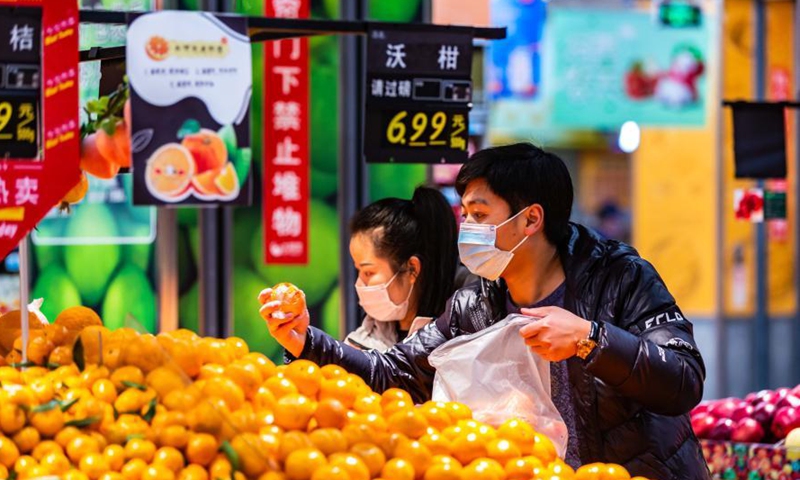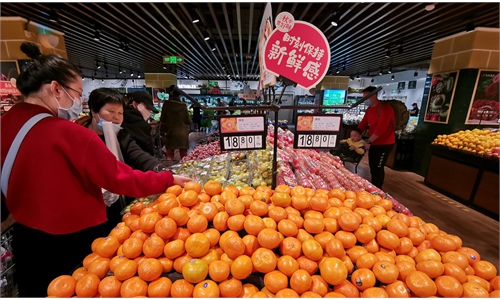
Photo:Xinhua
China's consumer and factory gate prices both grew in March, exceeding expectations amid a wave of local COVID-19 flare-ups, which are to accelerate commodity cost pressures.
The consumer price index (CPI) beat broad forecasts in March, rising 1.5 percent year-on-year, led by price hikes for fresh vegetables, fruits and gasoline at the pump.
On a monthly basis, the CPI rose 0.6 percentage points compared with February. Food prices fell by 1.5 percent, reducing the CPI by about 0.28 percentage points.
The prices of fresh vegetables rose 17.2 percent, data from the National Bureau of Statistics (NBS) showed Monday.
"Affected by the upgraded measures to fight the coronavirus, transportation and other links were disrupted, resulting in price hikes of fresh vegetables and fruits," Dong Dengxin, director of the Finance and Securities Institute at the Wuhan University of Science and Technology, told the Global Times on Monday.
The Ministry of Transport vowed over the weekend to ensure the smooth operation of international and domestic freight, and the transportation of essential goods and commodities in particular, to help maintain stability of crucial industrial supply chains in the world.
Prices of non-food industrial consumer goods has obviously driven up CPI growth in March, accounting for a 1.77 percentage spike. Gasoline, diesel and liquefied petroleum gas prices rose 24.6 percent, 26.9 percent and 27.1 percent, respectively, according to the NBS data.
The producer price index (PPI), which measures costs for goods at the factory gate, rose 8.3 percent year-on-year in March, also exceeding expectations.
Amid the Russia-Ukraine conflict, international bulk commodity prices remained elevated, international crude oil prices fluctuated at high levels, and non-ferrous metal prices were also at high levels.
On a month-on-month basis, the PPI went up 1.1 percent in March, expanding 0.6 percentage points from the previous month. On a yearly basis, the PPI growth fell 0.5 percentage points from February, mainly due to the high base of the same period last year, NBS data showed.
"We could see that the high PPI will eventually translate to the consumer sector," Dong said.
COVID-19 resurgences have curbed consumption, which could drag on the CPI.
"Under the influence of the two factors, we can say the 1.5 percent growth of the CPI on a yearly basis would be a favored figure and within expectations," Dong said.
He said that consumer prices may keep rising in the next few months, largely due to higher producer prices.
Global Times

